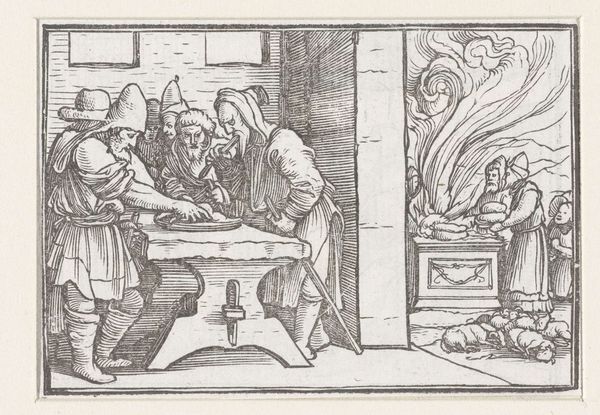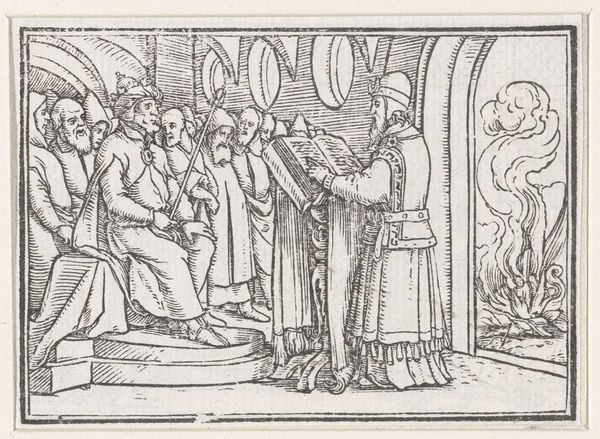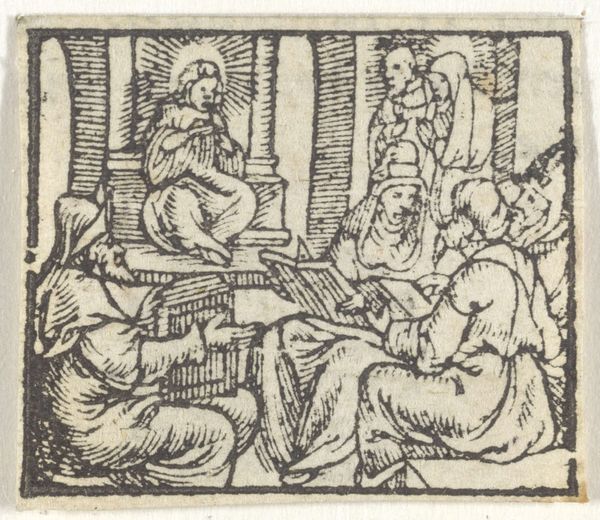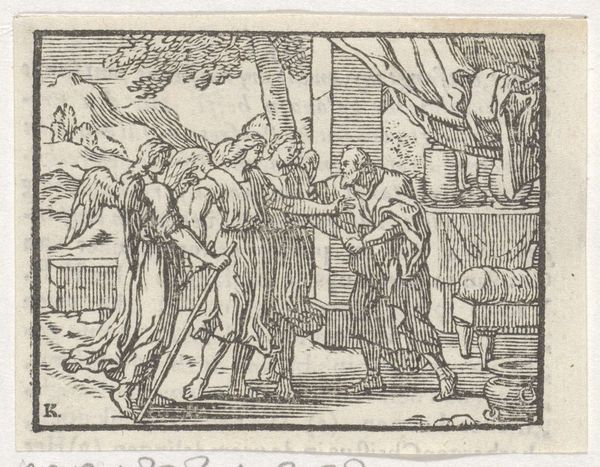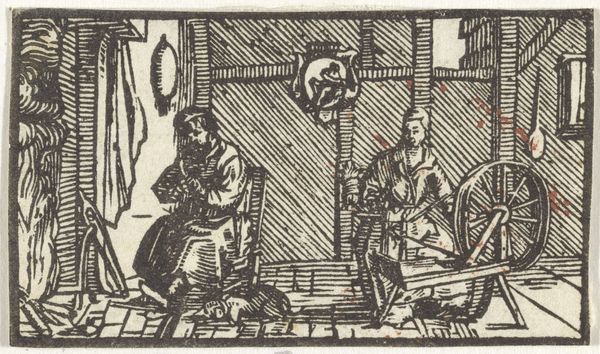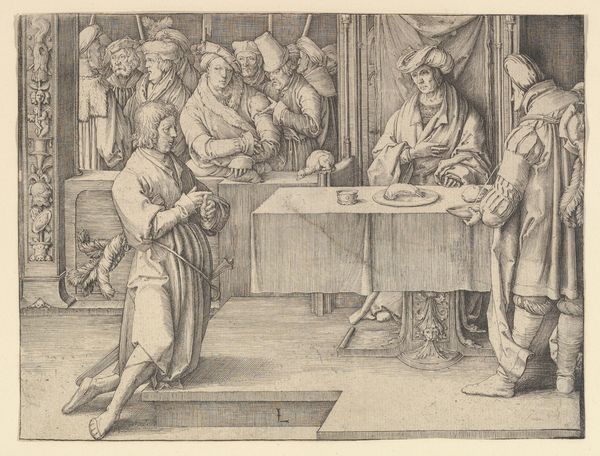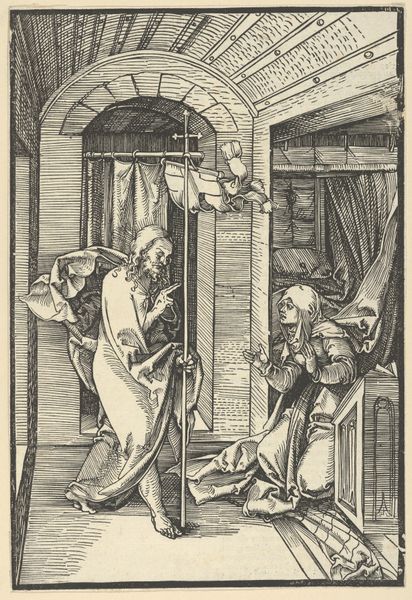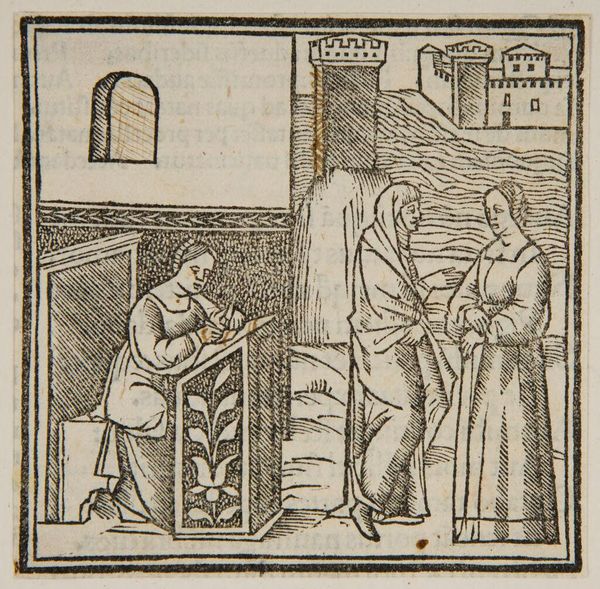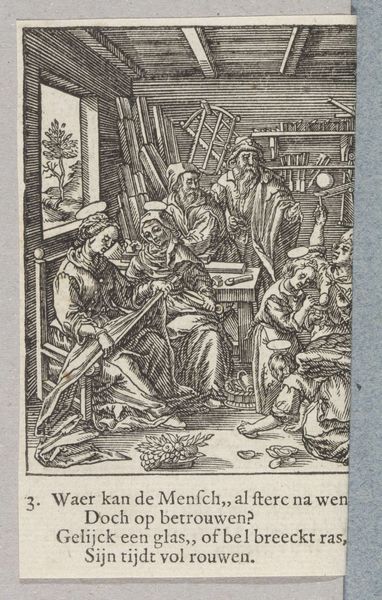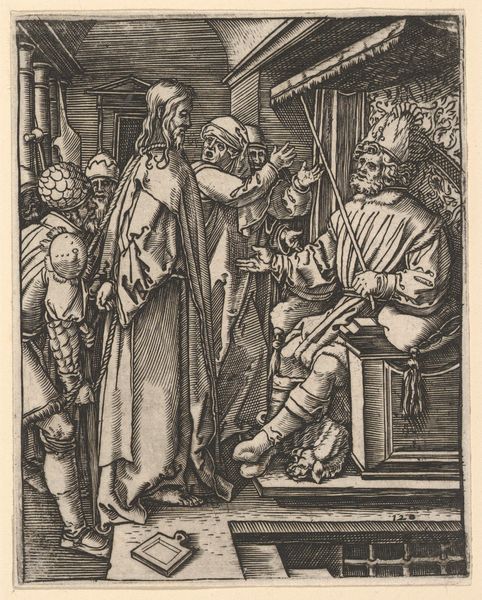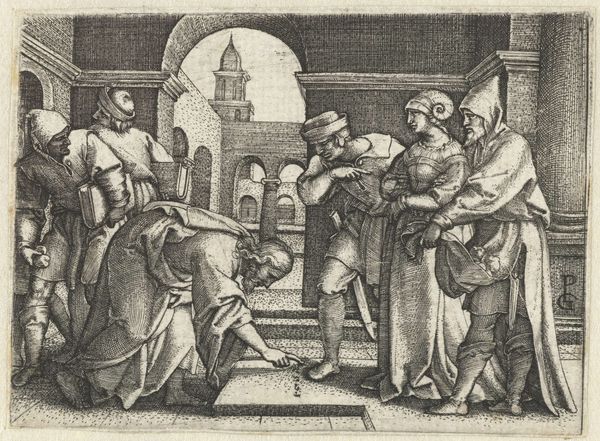
drawing, print, ink, engraving
#
drawing
#
narrative-art
# print
#
pen illustration
#
figuration
#
ink line art
#
ink
#
pen-ink sketch
#
line
#
sketchbook drawing
#
history-painting
#
northern-renaissance
#
engraving
Dimensions: height 60 mm, width 85 mm, height 87 mm, width 99 mm
Copyright: Rijks Museum: Open Domain
This woodcut, crafted by Hans Holbein the Younger, depicts Moses instructing the Israelites in the laws. Note the tablets on the table before Moses, symbolizing divine law and moral authority. This motif of law-giving is not confined to this image alone; throughout history, figures of authority have been shown presenting laws to the people, from Hammurabi receiving his code from Shamash to Roman emperors codifying laws. The act of bestowing laws carries a psychological weight. It represents order, control, and the establishment of societal norms. The upraised hand of Moses appears also in images of Roman emperors addressing crowds, a gesture meant to convey power. However, whereas for the Romans, authority came from a military power, in the figure of Moses the Law comes from God. Across time, the transmission of laws and rules takes on diverse forms, yet the underlying psychological need for order and structure persists. This image resonates with our own cultural memory, reminding us of the enduring human quest for ethical guidelines, and our leaders' perceived role as dispensers of justice and moral guidance.
Comments
No comments
Be the first to comment and join the conversation on the ultimate creative platform.
